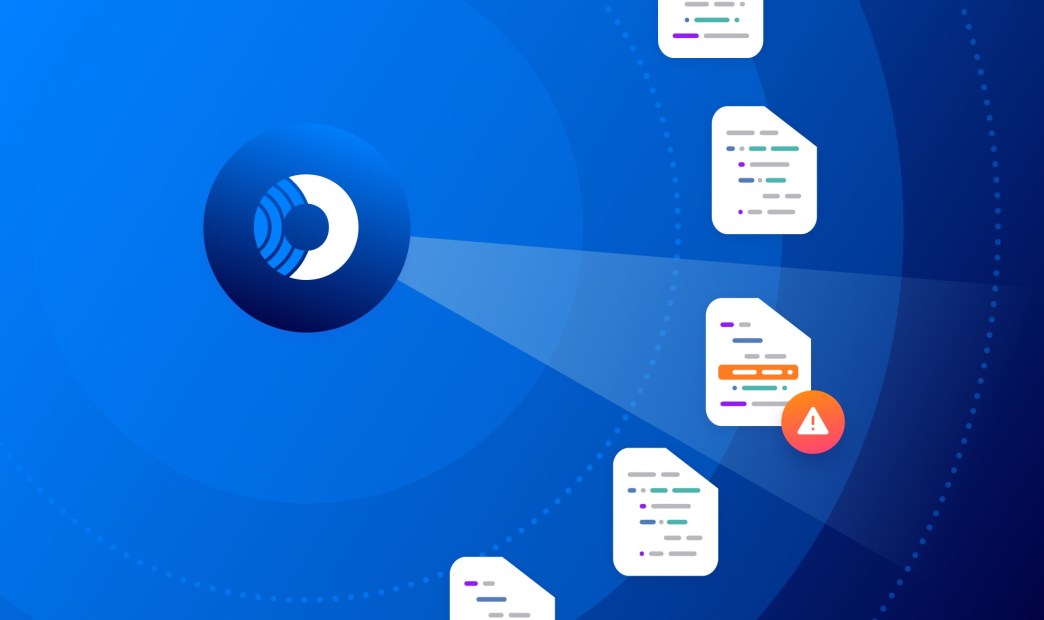This post was originally published on The New Stack.
Infrastructure-as-Code, or IaC, is something that tends to excite DevOps teams and security teams alike. For DevOps, IaC provides a means of automating and scaling processes that would take a long time to complete manually. And from a security perspective, IaC offers the benefit of reducing the chances that engineers will introduce security risks into IT environments through manual configuration oversights or errors.
That said, IaC only makes IT environments more secure if your IaC code itself is secure. Problems in IaC code can easily become the weakest link in your security strategy if you don’t identify them before putting the code to use.
That’s why having an IaC scanning strategy in place is critical for ensuring that developers, DevOps engineers, and anyone else who takes advantage of IaC can do so without undercutting security priorities. Keep reading for an overview of why IaC scanning is important, how it works, and how to leverage it to maximum effect.
What Is IaC?
IaC is the use of code to manage IT infrastructure provisioning and configuration. When you use IaC, you write code that defines how you want a resource to be provisioned. You then use an IaC platform (such as Terraform or Ansible, to name just a couple of popular IaC tools) that automatically applies that configuration to the resources you specify.
In this way, IaC saves engineers a lot of time because it allows them to apply the same configuration to as many resources as they want automatically. IaC also reduces the risk of configuration errors that could occur if engineers were setting up each resource by hand and accidentally applied the wrong settings in some instances.
What Is IaC Scanning?
IaC scanning is the use of automated tools to validate the IaC configuration files. In other words, when you perform IaC scanning, you scan the IaC code that defines how you want resources to be configured. The IaC scanners can detect potential mistakes or security issues that lie within the code.
IaC scanning goes hand-in-hand with the concept of shift-left security, which means performing security checks as early as possible in the software delivery lifecycle. With IaC scanning, you can easily validate whether your planned configurations are secure before you actually apply those configurations. In that way, you can detect security risks earlier in the software delivery process, before the configurations are deployed.
Why Is IaC Scanning Important?
IaC scanning is important because any mistakes or oversights that exist in IaC code will be repeated across any resources to which you apply the code. By scanning your IaC code before applying it, you can catch and resolve problems before they affect live resources.
As an example of how IaC scanning can benefit an organization, imagine you wrote the following IaC code to deploy a containerized application using Terraform:
resource “docker_container” “my_container” {
name = “my_container”
image = “my_image”
command = “bash”
privileged = true
user = “root”
}
This code configures a container to run in privileged mode as the root user. Terraform won’t stop you from running a container in this way, but doing so presents a security risk. If your container runs as root, attackers who manage to compromise the container can more easily escalate the attack to take control of the host operating system and any other containers running on the system.
For this reason, most IaC scanners would flag this configuration and warn you of the potential dangers. You could then modify your code so that your containers do not run in privileged mode when you deploy them based on this code.
IaC scanning can also help to detect configuration errors, such as misconfigured file paths or user parameters, that might cause resources not to run properly. However, the main benefit of IaC scanning is that it helps protect against security risks.
Best Practices for Choosing an IaC Scanning Solution
There are a number of IaC scanners on the market today. When selecting between the various options, look for an IaC scanning tool that delivers the following capabilities:
- Broad IaC framework support: Ideally, your IaC scanner will be able to validate IaC code written for any IaC framework – Terraform, Ansible, CloudFormation, and so on – rather than only supporting one or two types of IaC frameworks.
- CI/CD integration: The most efficient IaC scanners integrate with CI/CD tooling so that scans happen as an integral part of the software delivery process.
- Comprehensive risk detection: The errors that can exist in IaC code come in many forms. The best IaC scanners are capable of detecting a wide range of problems – from vulnerable dependencies, to access control misconfigurations, to typos that might cause security policies not to be applied properly, and beyond.
- Risk prioritization: Not all IaC security risks are of equal severity. A good IaC scanner will assess each risk it discovers and highlight those that pose the greatest threat so that you know which ones to address first.
Conclusion: Using IaC Responsibly
IaC is a powerful type of tool for accelerating and scaling complex IT processes while also avoiding the risk of security problems triggered by manual configuration oversights.
However, if the code that governs your IaC workflows is insecure, IaC can quickly become a source of security risks rather than a way to mitigate them. Mitigate this challenge by deploying IaC scanners as part of your CI/CD process and leveraging scanning to drive shift-left security.
Want to learn more about how to secure your cloud infrastructure and improve your overall security posture?
Orca Security provides a shift-left approach to security by integrating IaC scanning early in your CI/CD process. The Orca Cloud Security Platform offers a comprehensive solution for diagnosing vulnerabilities, misconfigurations, and compliance issues in your cloud environment, providing an all-inclusive view of your risk posture. By identifying and mitigating security risks early in the development cycle, Orca Security helps you achieve shift-left security and reduce the overall risk to your cloud infrastructure.
Request a demo to learn more about how Orca Security can help you secure your cloud infrastructure and improve your overall security posture.






